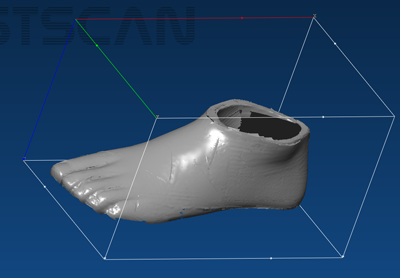
Week Three: 3D Scanning and Printing
Printing
I want to see if I can print a functional copy of my trumpet mouthpiece, a Monette B2.
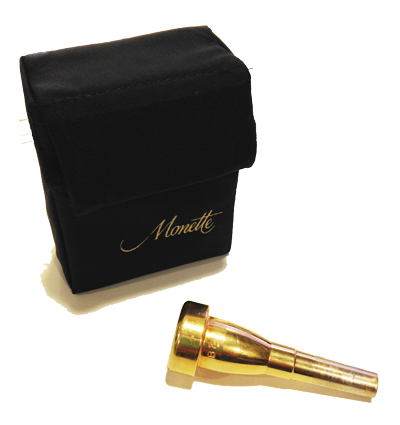
I can measure most of the dimensions with calipers. That seems easier and faster than scanning the mouthpiece, especially since it's reflective and might not scan well.

(Note, a couple of the dimensions in the sketch above are wrong, so if you're interested in reproducing this, ignore those numbers. Here are the SolidWorks part and stl file.)
I can't really use the calipers to get the dimensions of the cup (the inside of the wide part). But I can use some modeling clay to made a mold of it, and then measure that. I've put a plastic bag around the clay so it doesn't get into the mouthpiece.
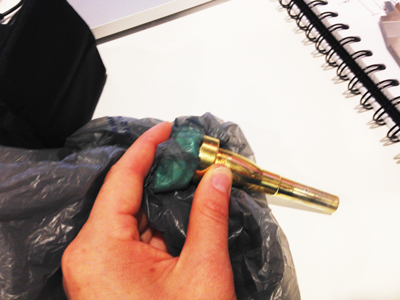
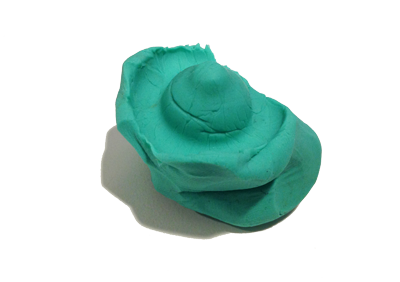
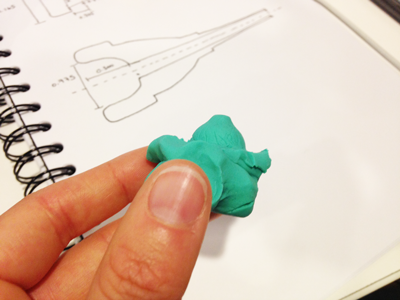
Now I have all the inner dimensions too.
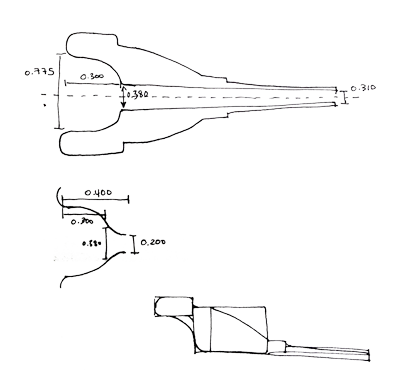
I did the modeling in SolidWorks. I'm new to it, but the official SolidWorks tutorials and some help from officemates when I had questions were enough to make this feel straightforward (if slow--it took somewhere between one and two hours). A useful piece of advice was to start with a sketch of the cross-section, then revolve it to get the three-dimensional shape, rather than starting in three dimensions.

The curve of the cup isn't a perfect reproduction of the actual shape. It's a spline shaped by eye, looking at the mold, with two intermediate points placed based on measurements. The curve on the outer surface is also an approximation, as are the fillet diameters on the rim. The error in these shapes (particularly the cup) will probably have some effect on the sound, but so will the fact that this mouthpiece will be made of plastic...


Tom printed it on the Invision (I asked for whichever had the higher resolution of the two printers). Here's how it came out:
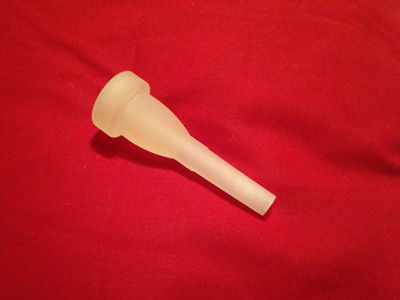
And here's how the printed mouthpiece (attached to the trumpet) sounds compared to the original.
It feels surprisingly close to the actual mouthpiece. The main difference isn't the material, it's that embouchure is actually slightly wrong--the cup is a bit larger than the original--which makes playing slightly harder because I have less control. It turns out that I added 0.1" to the inner and outer diameters of the rim (oops); I suspect I misread the calipers. Later I'll try printing a new mouthpiece with correct dimensions, and maybe some others with a variety of different cup shapes to see what feels best for me.
The supporting wax came off after >1 hour in the oven at 150 degrees, and an additional 10-15 minutes in an oil bath at home (I stirred it around in about 1/2 inch of vegetable oil in a small saucepan over low heat).
In between the oven and the oil bath, I made the mistake of trying to scratch some of the wax off with my fingernails. Surpisingly, I damaged the outside of the rim this way, carving a shallow groove in one side without realizing it. Should have had more patience.
(I'm still waiting for the company, 3D Systems, to get back to me on whether their proprietary photopolymer is non-toxic. But since playing trumpet doesn't actually involve putting the mouthpiece IN your mouth, just against your, lips, I will probably survive either way.)
Here again are the SolidWorks part and stl file.
Scanning
My officemate David Sengeh (here's his How to Make page) taught me how to use the Polhemus Fastscan laser 3d scanner in our lab. First I unsuccessfully tried to scan these things:
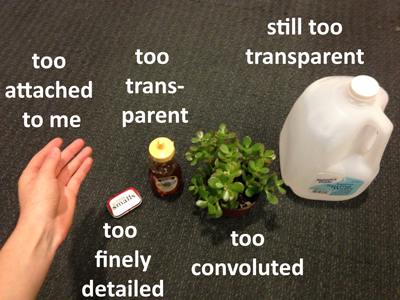
It took a while to find something opaque, relatively simple, not attached to my body, and not black (the Fastscan interprets anything black as background and excludes it). This cosmesis finally worked. If I were going to use this scan for anything, I would have to clean it up more carefully.

